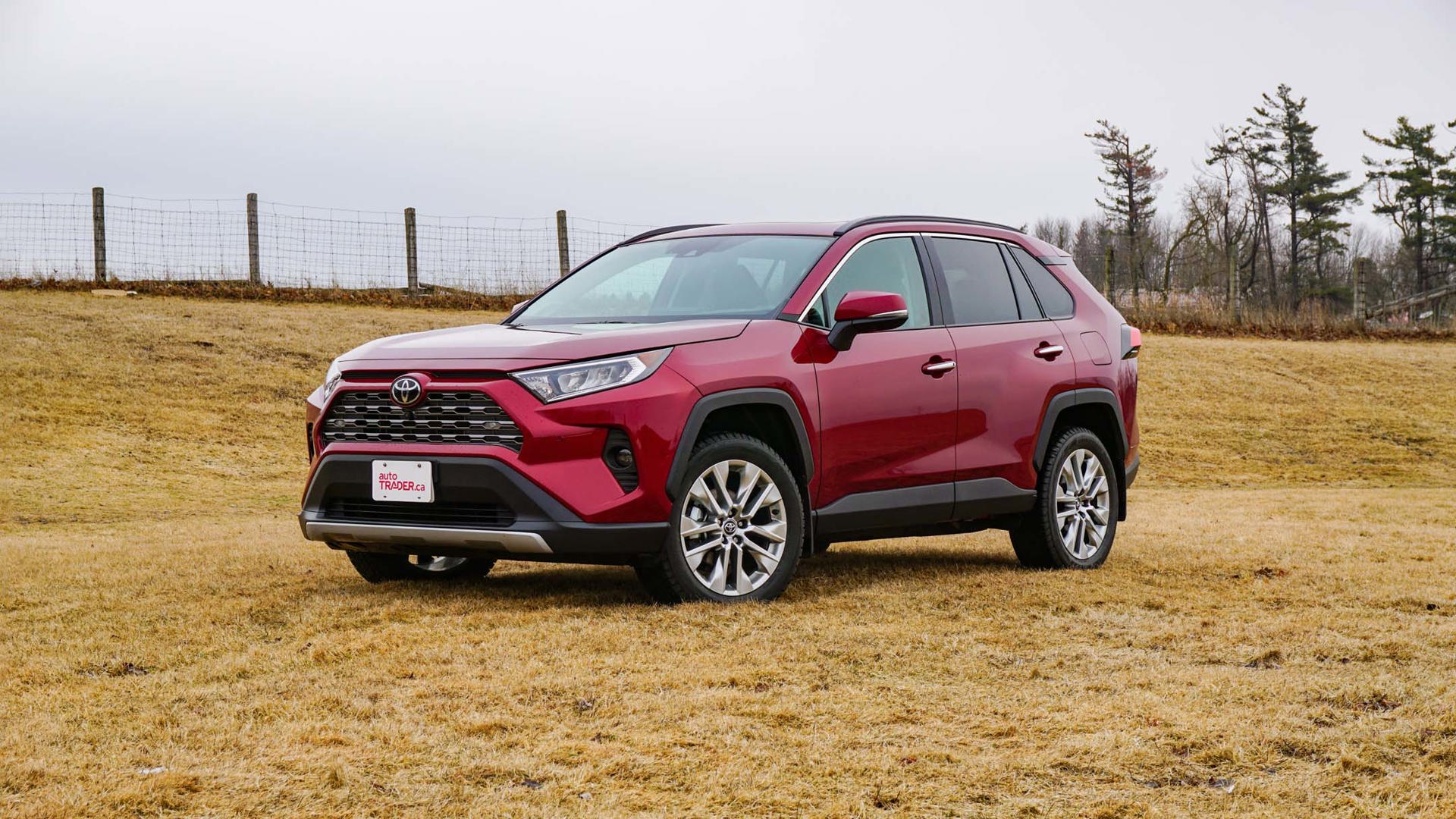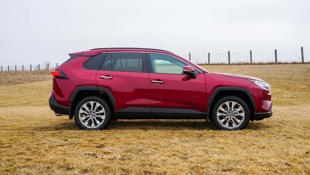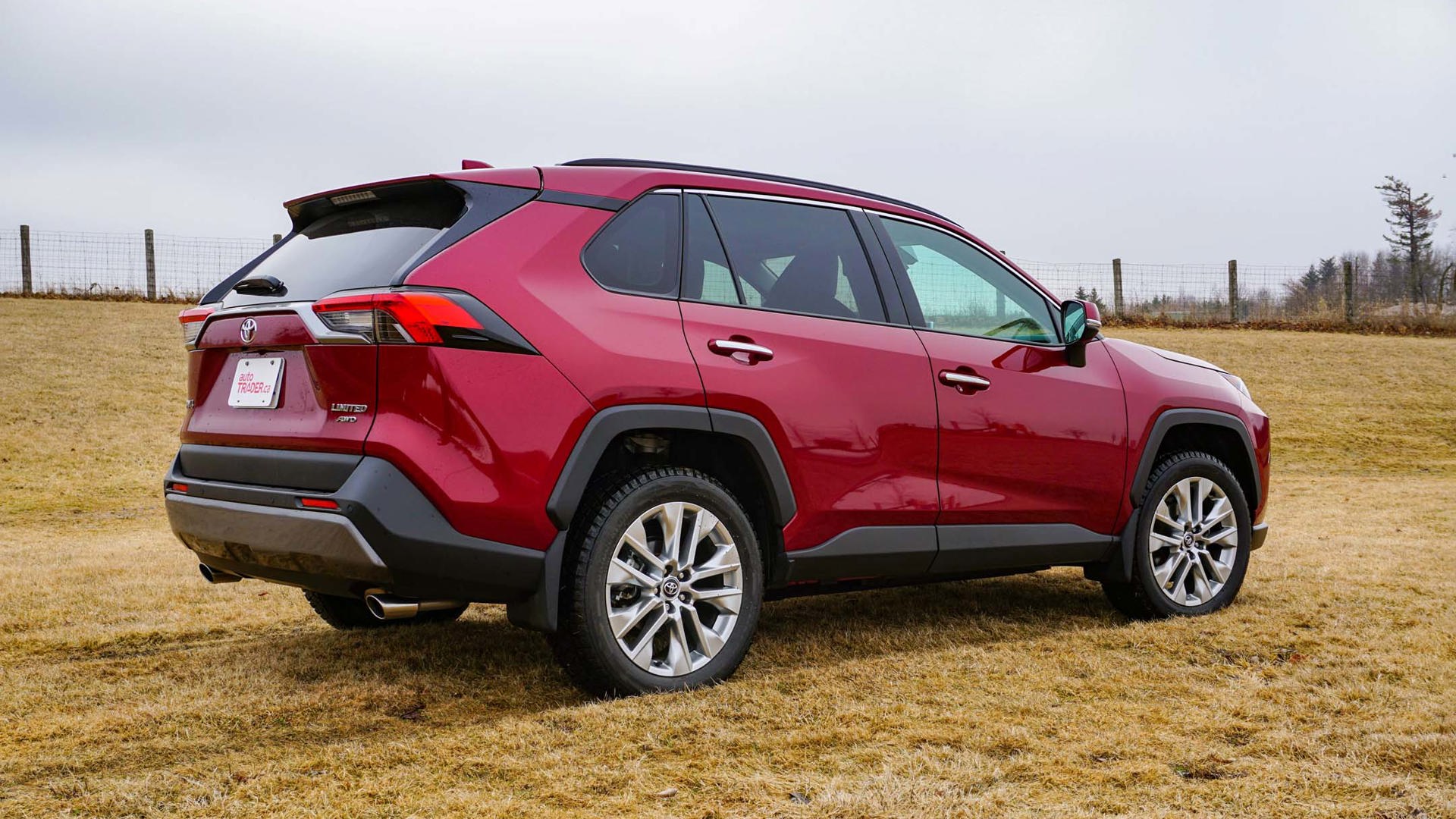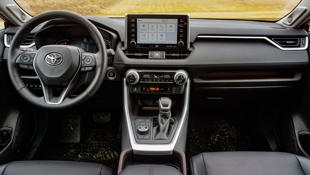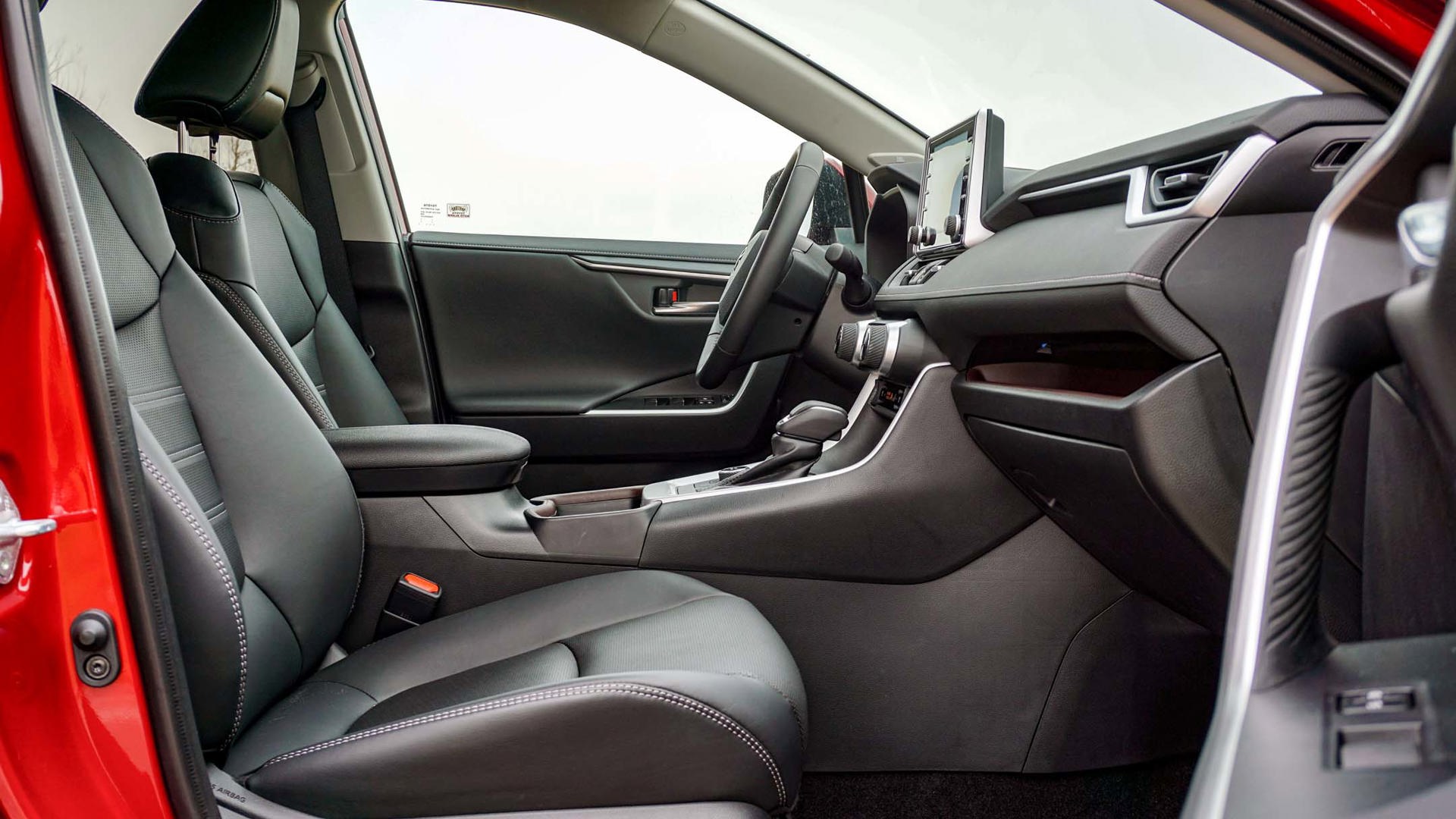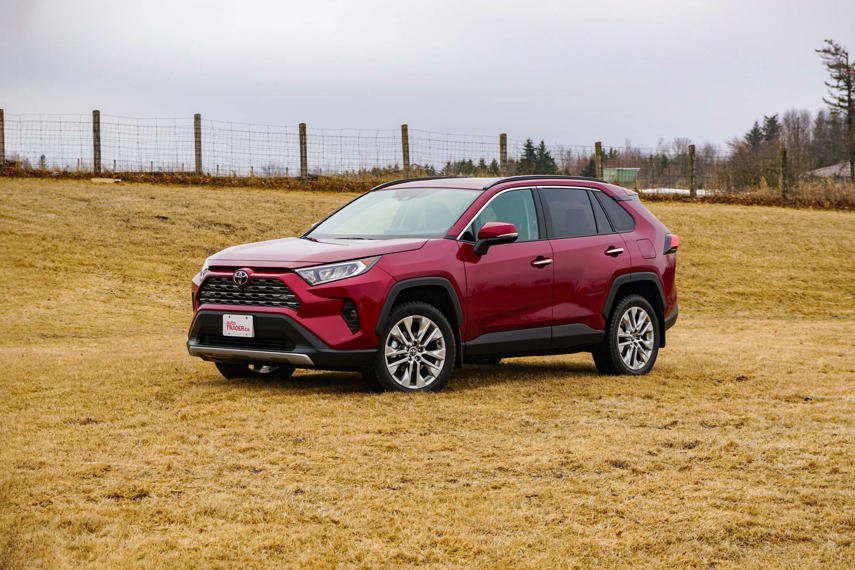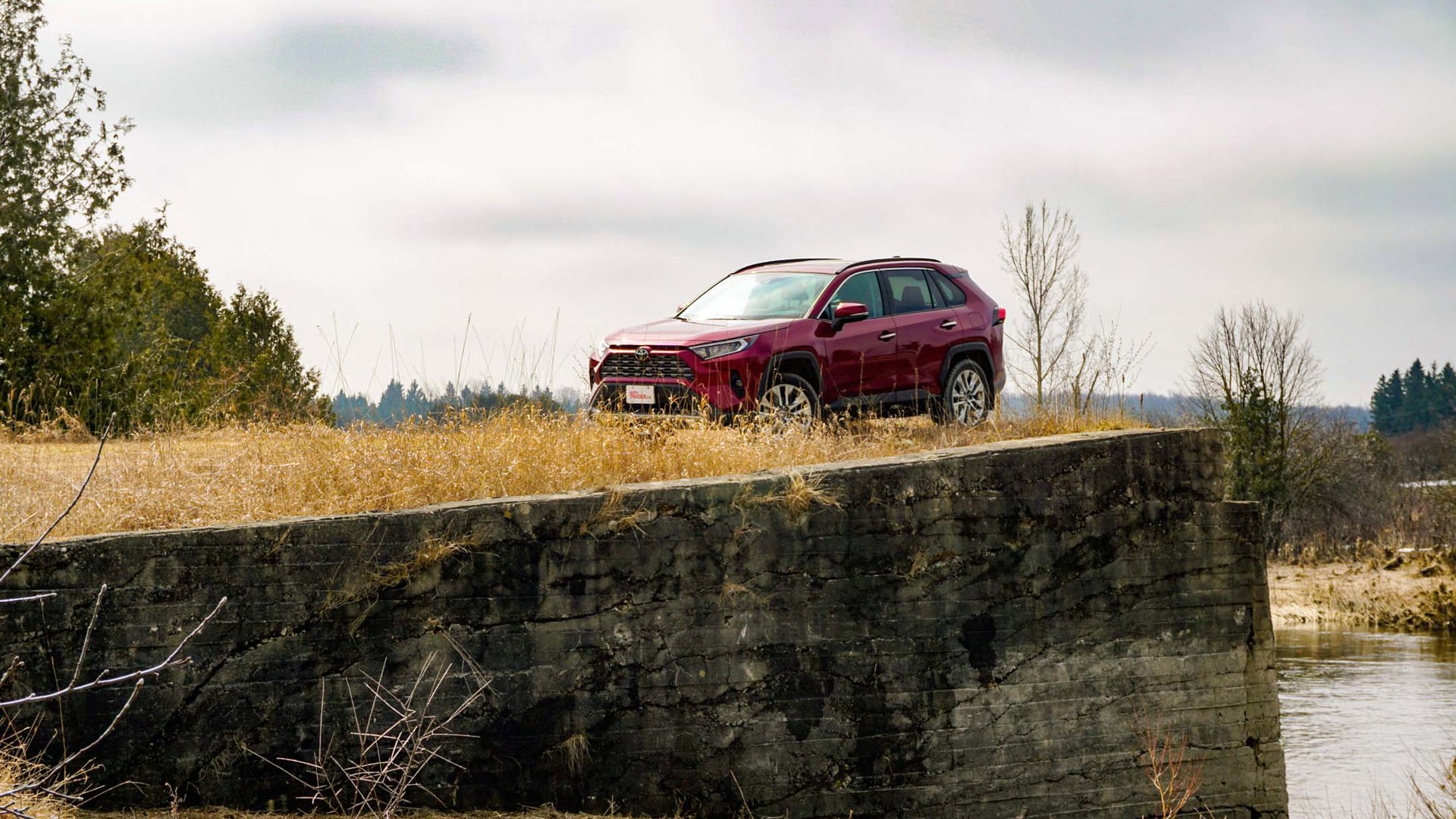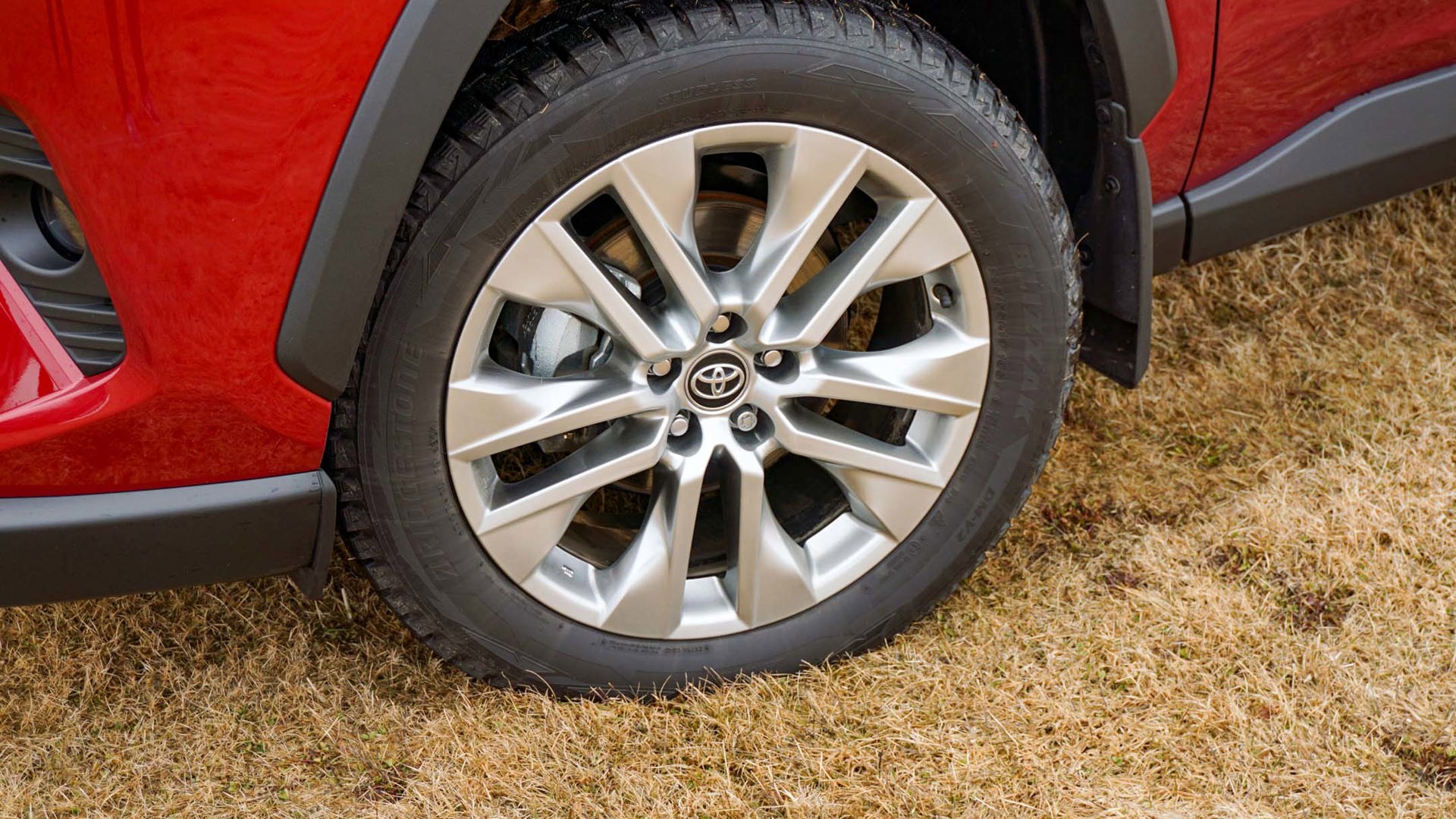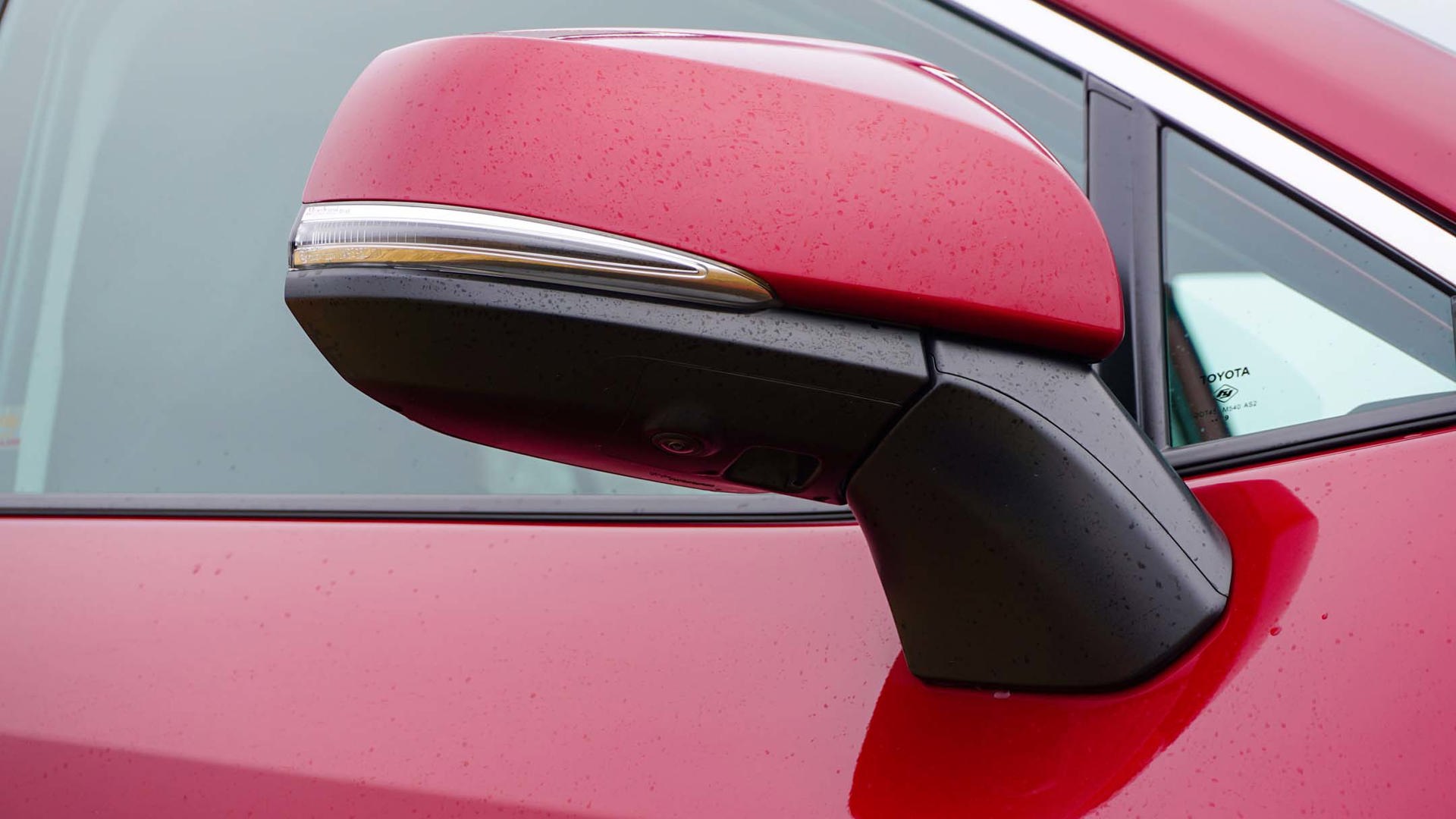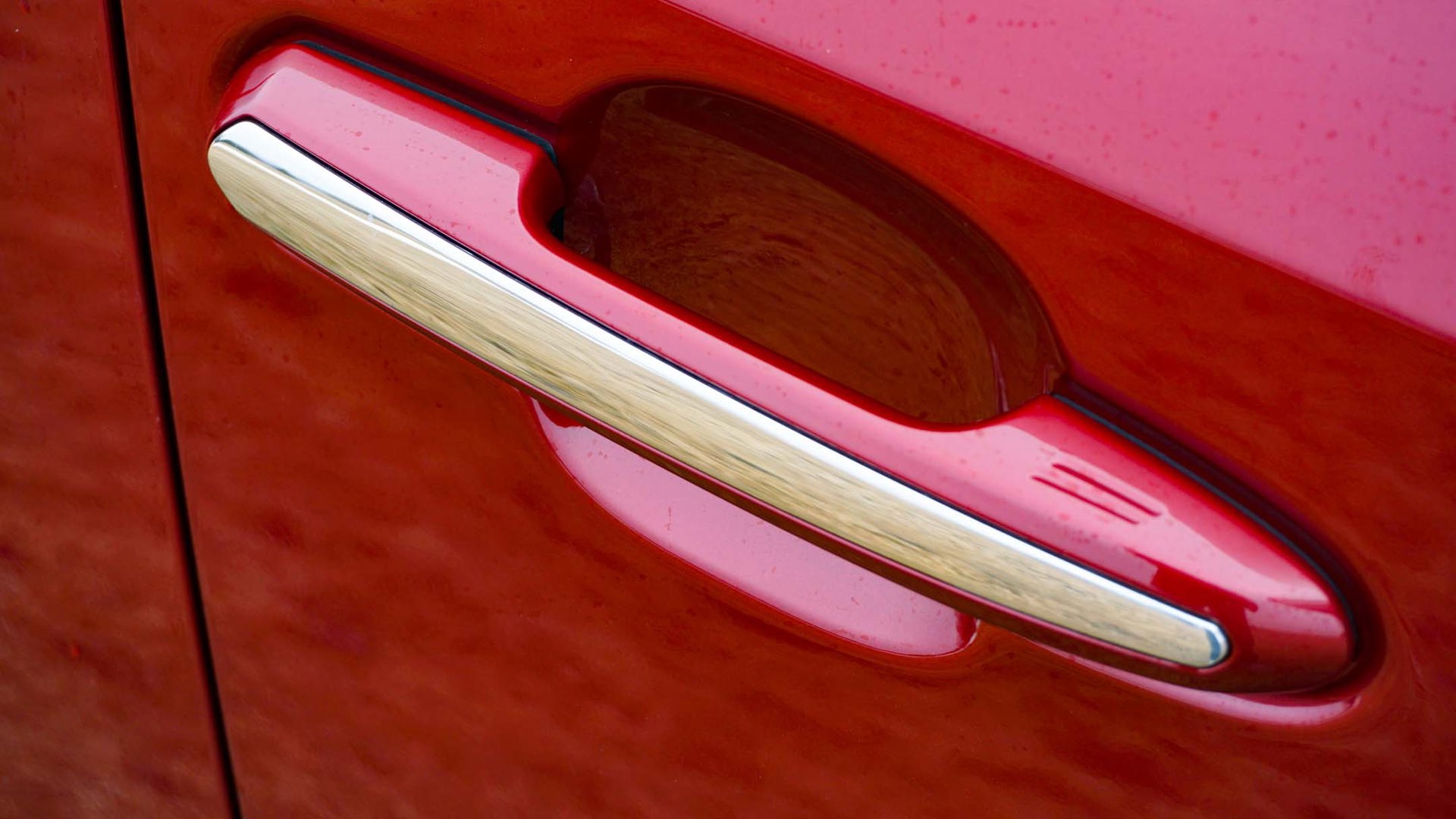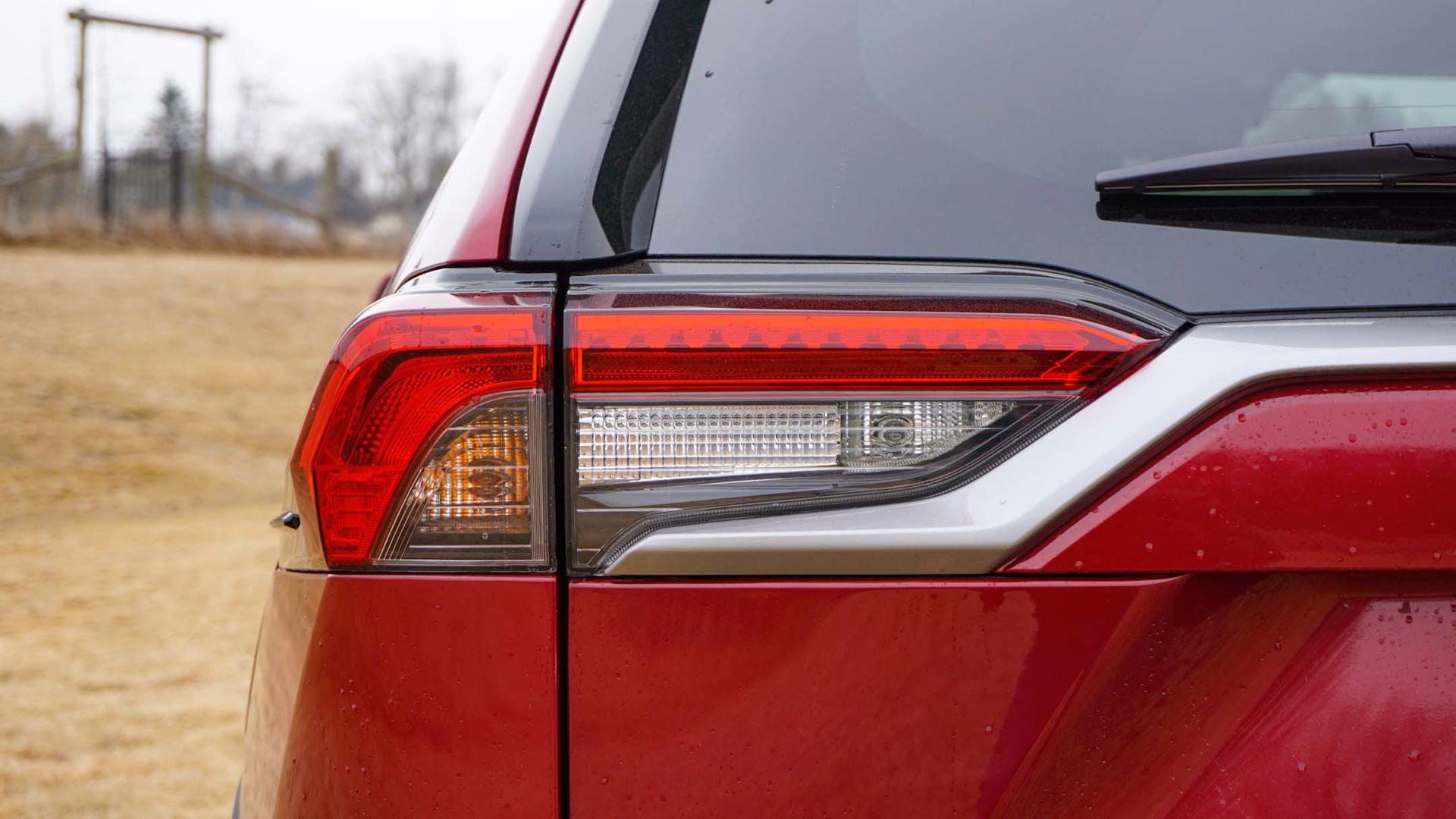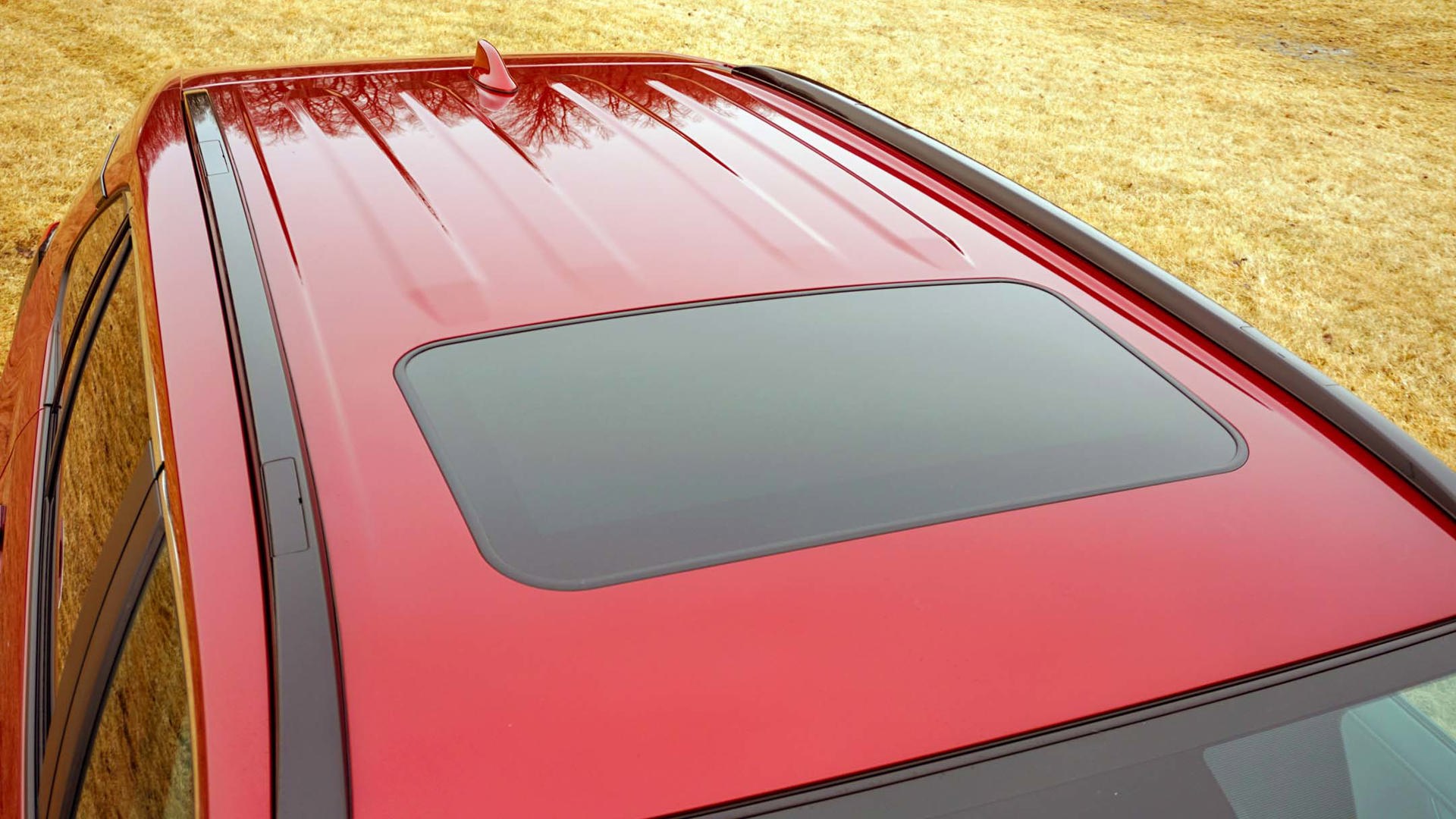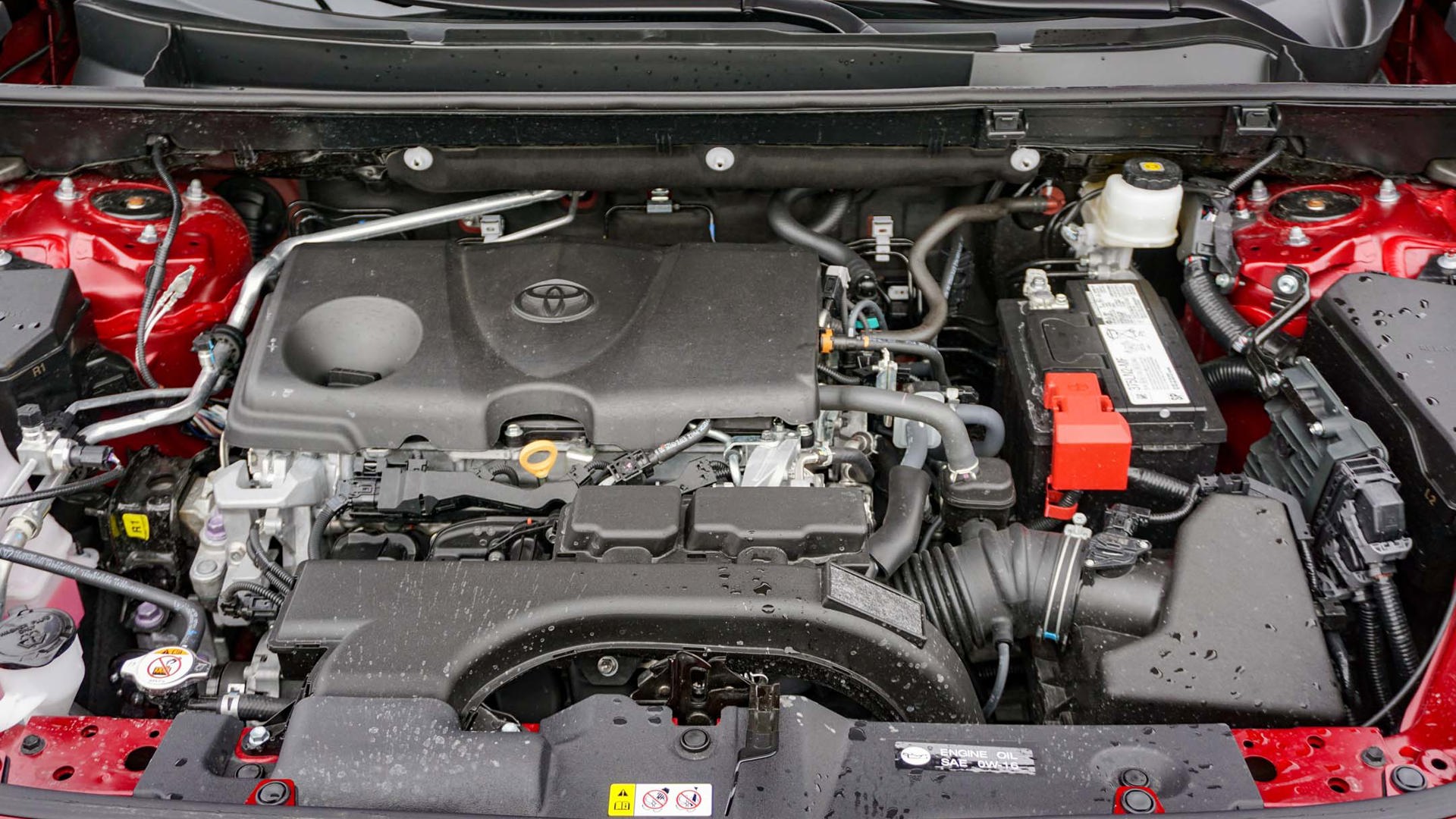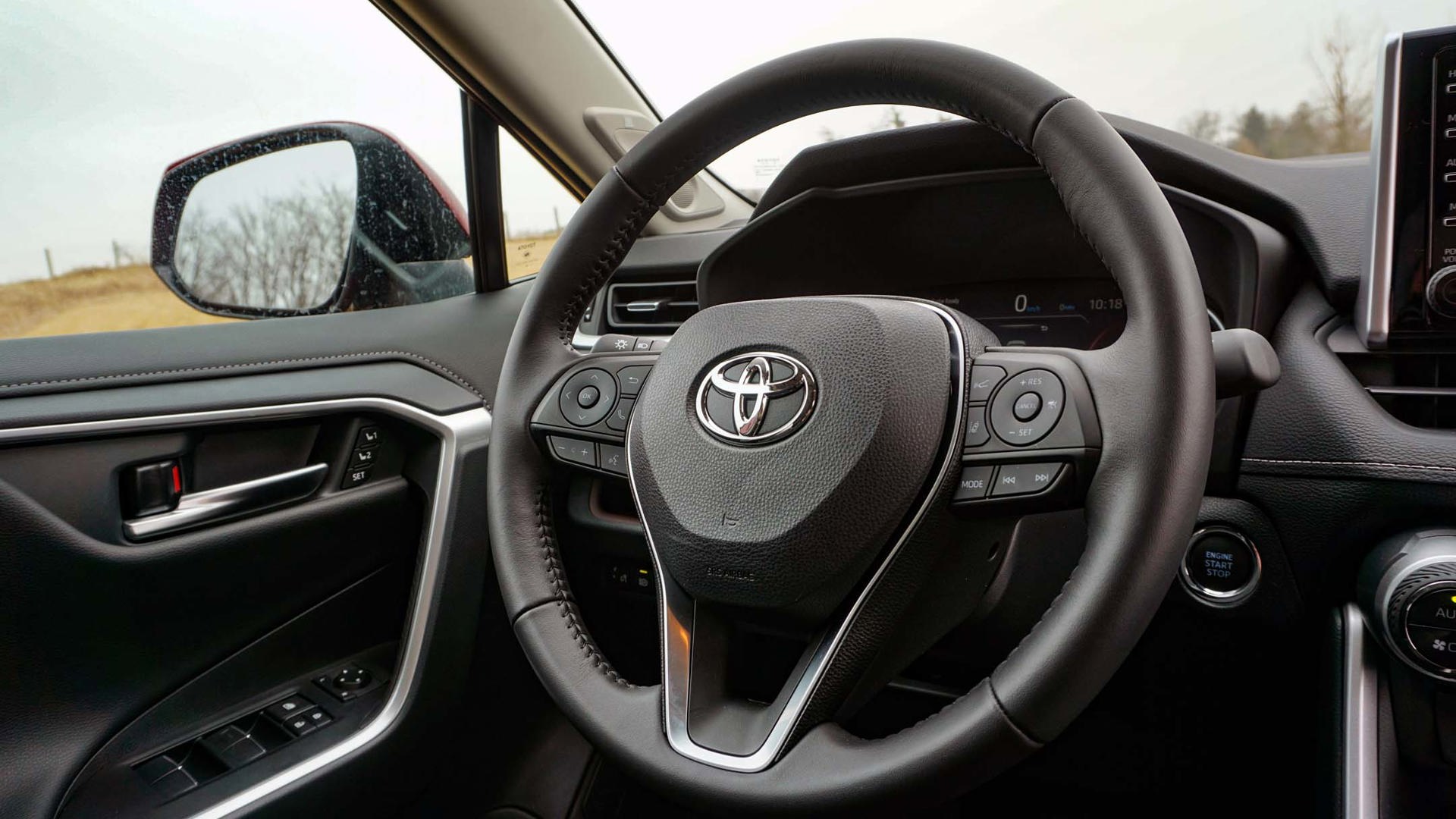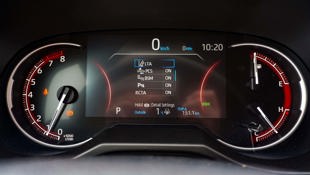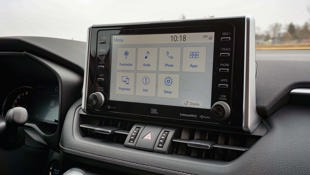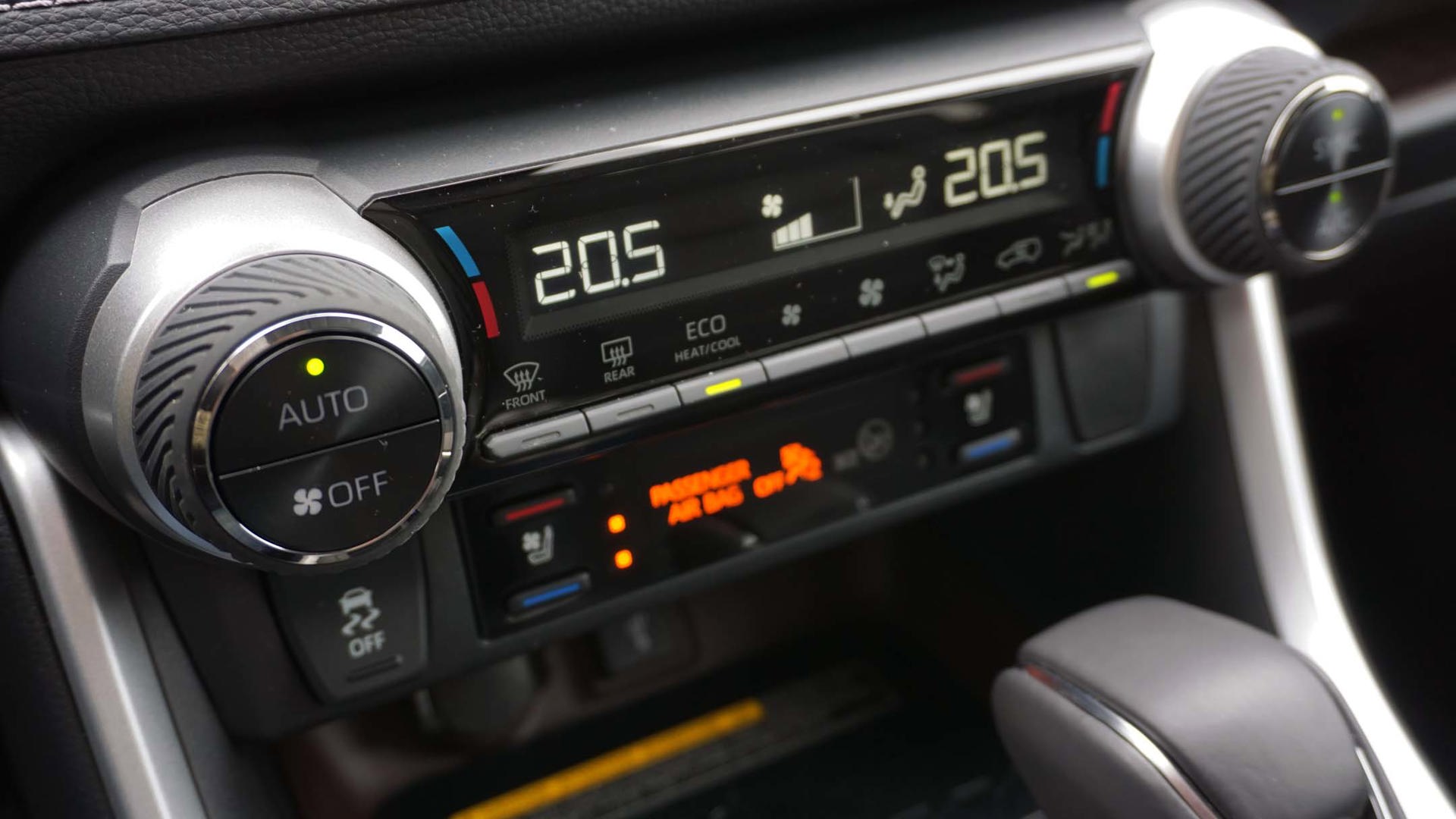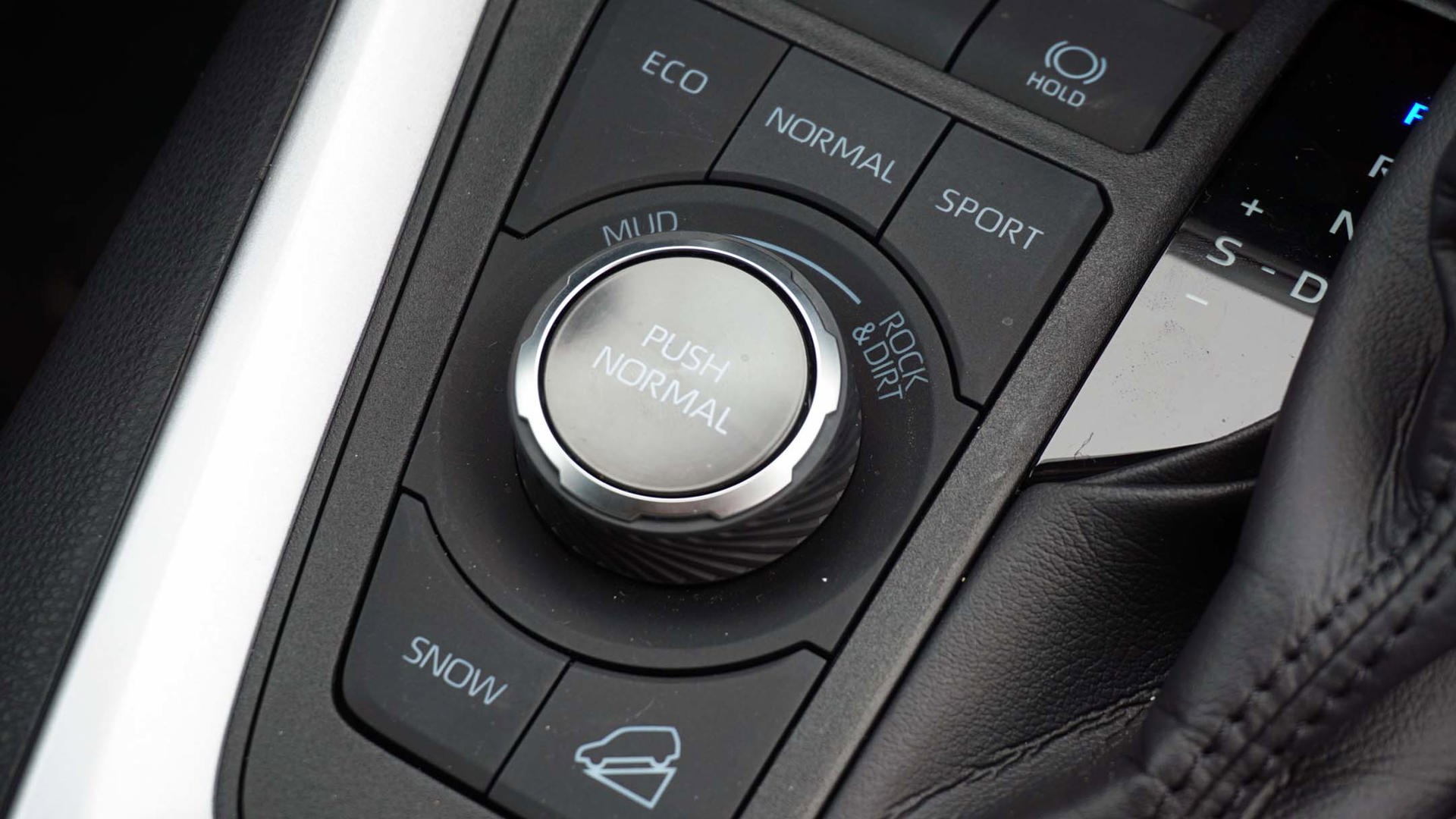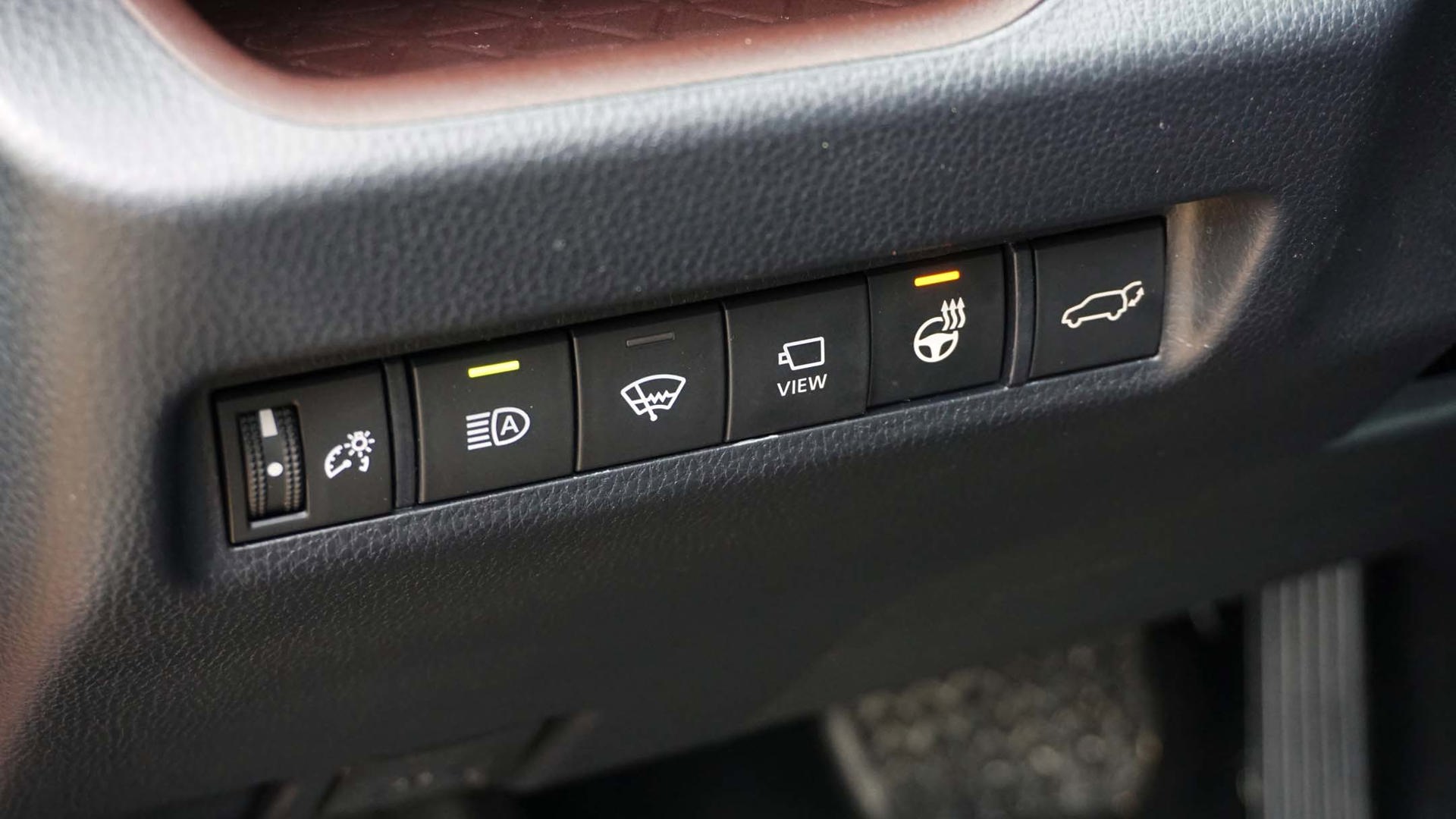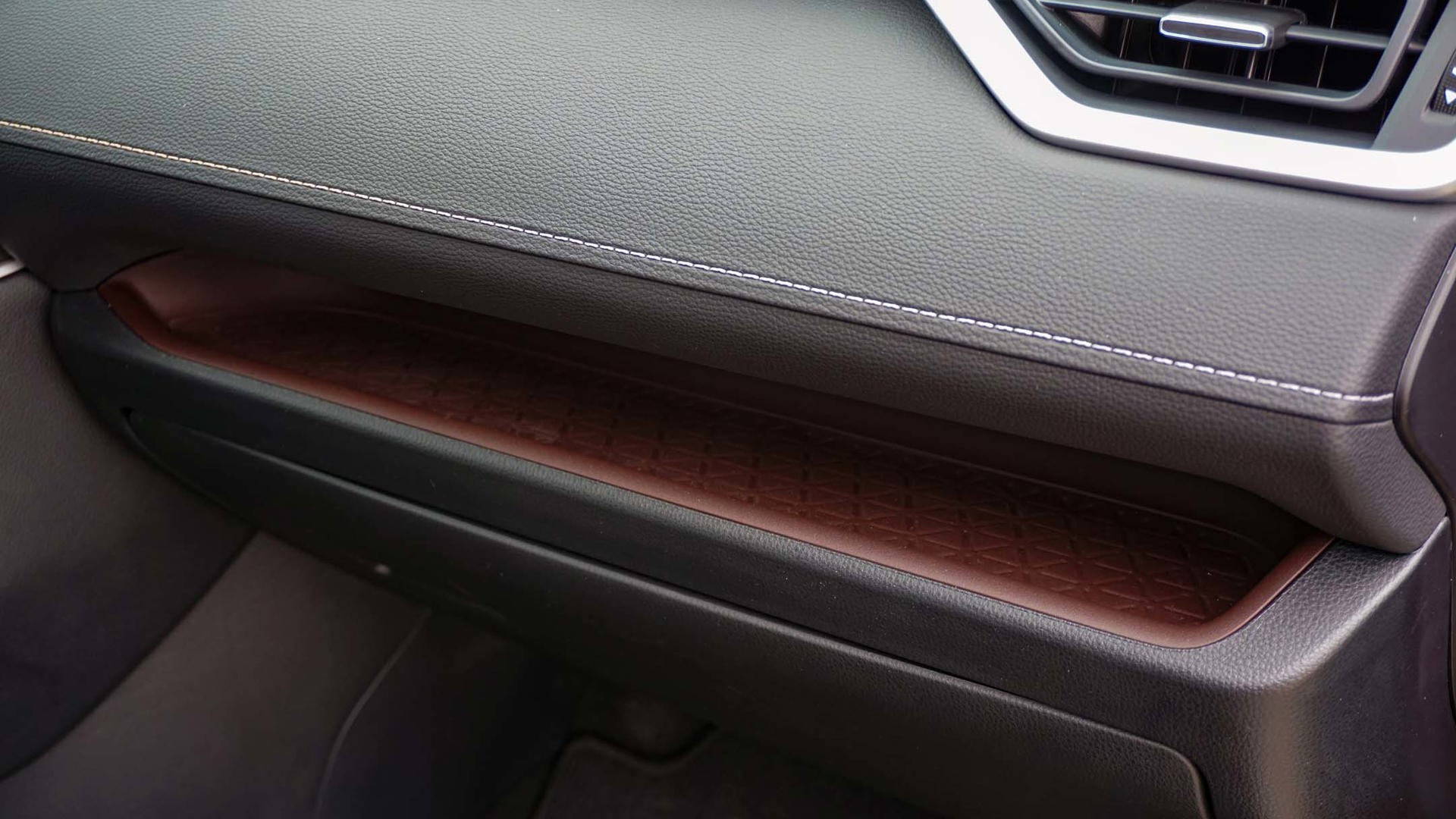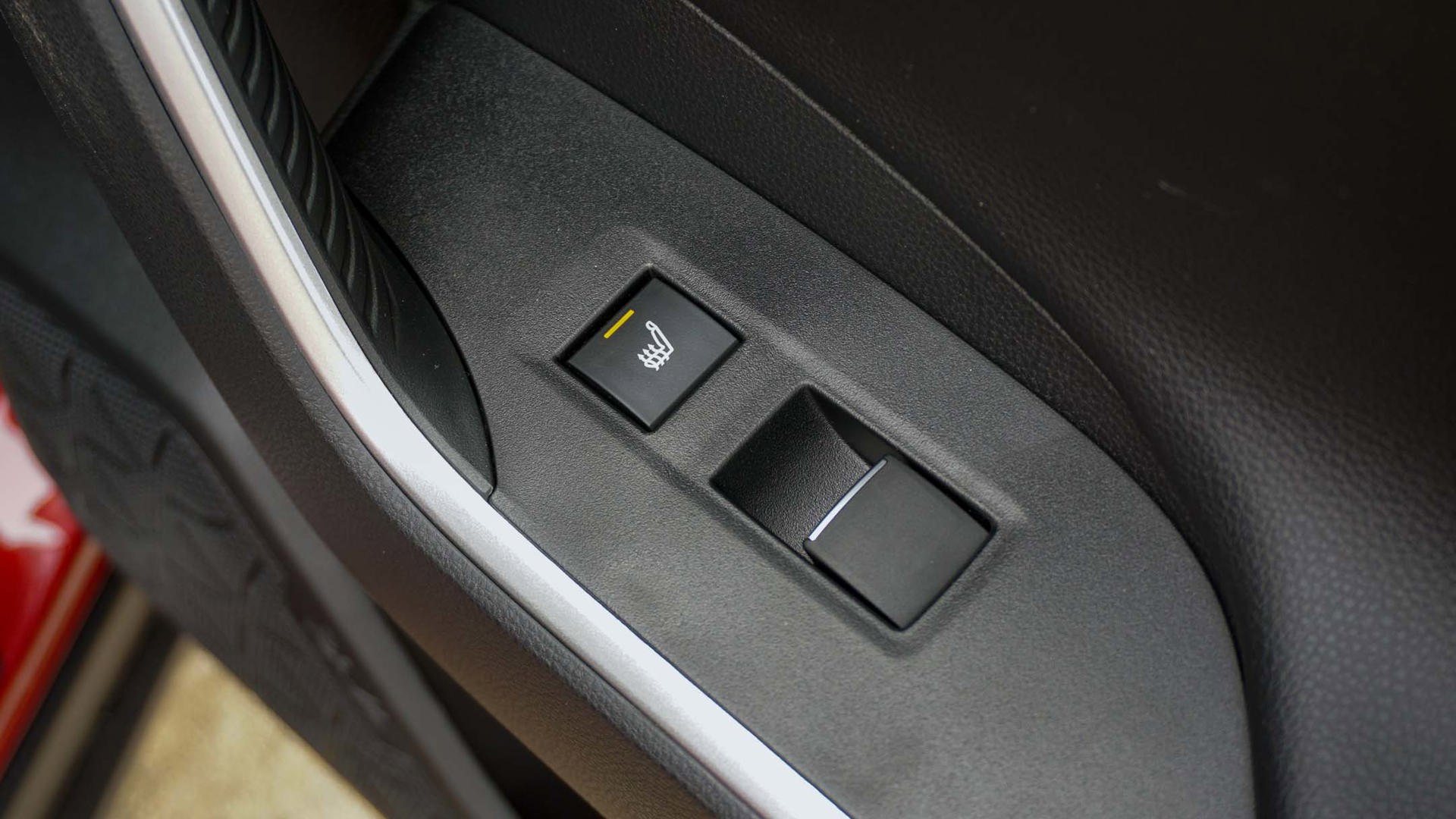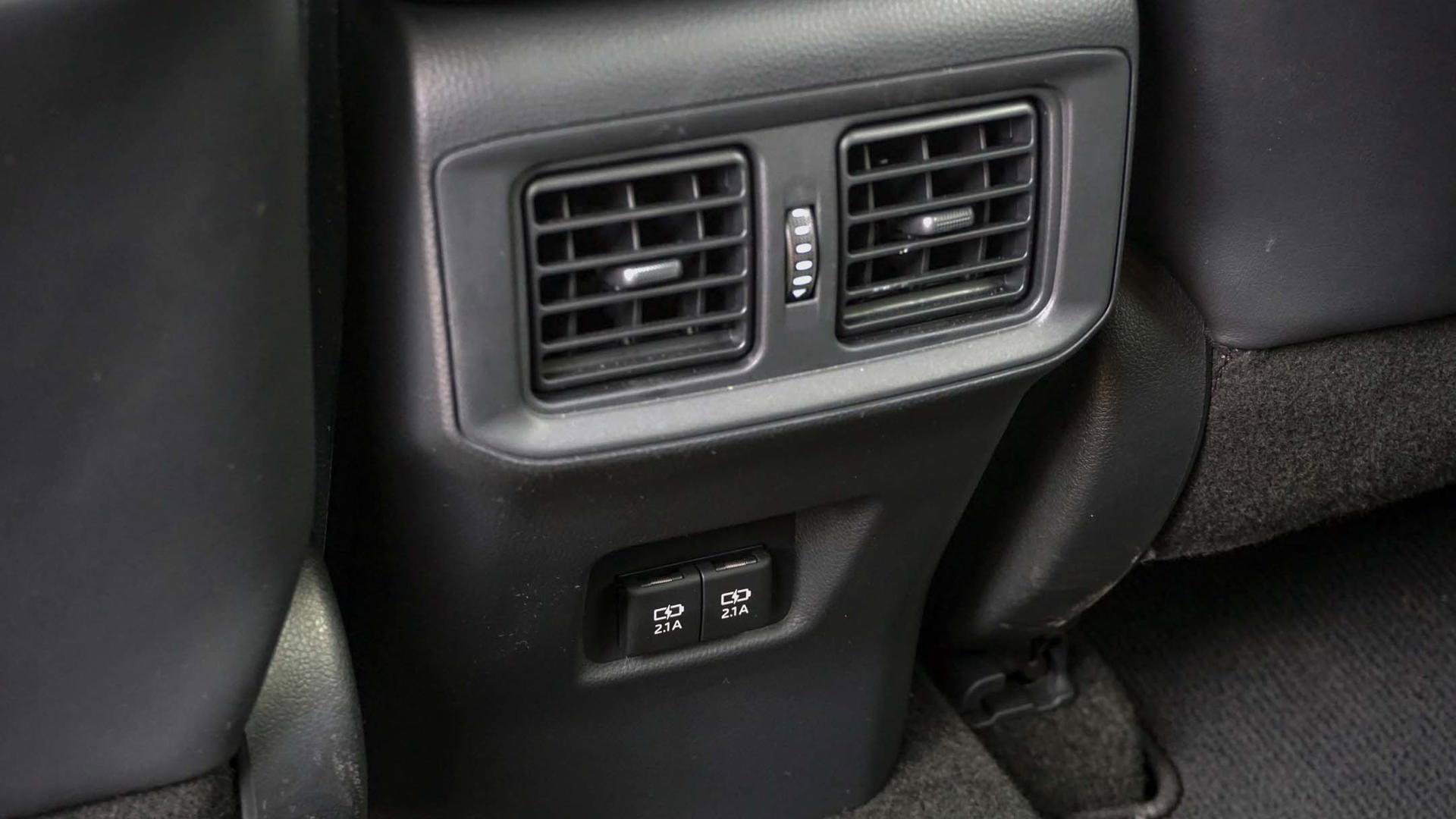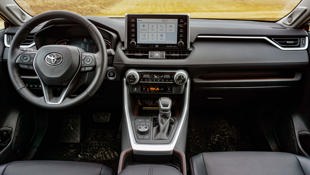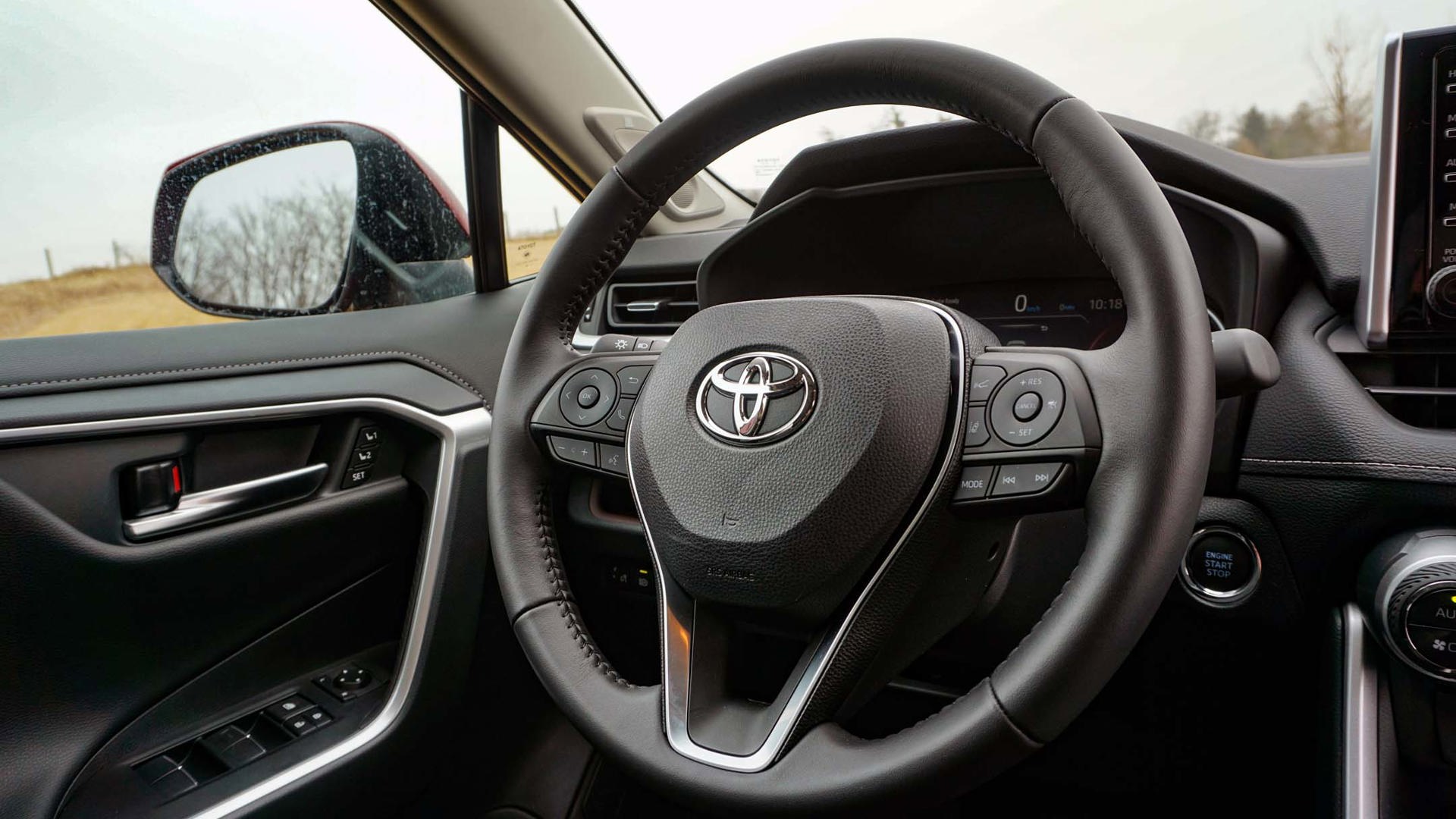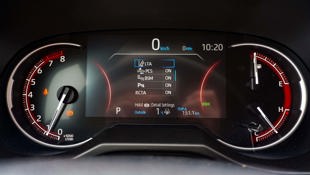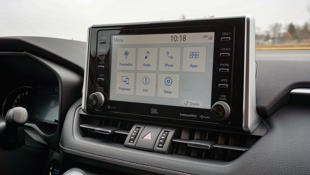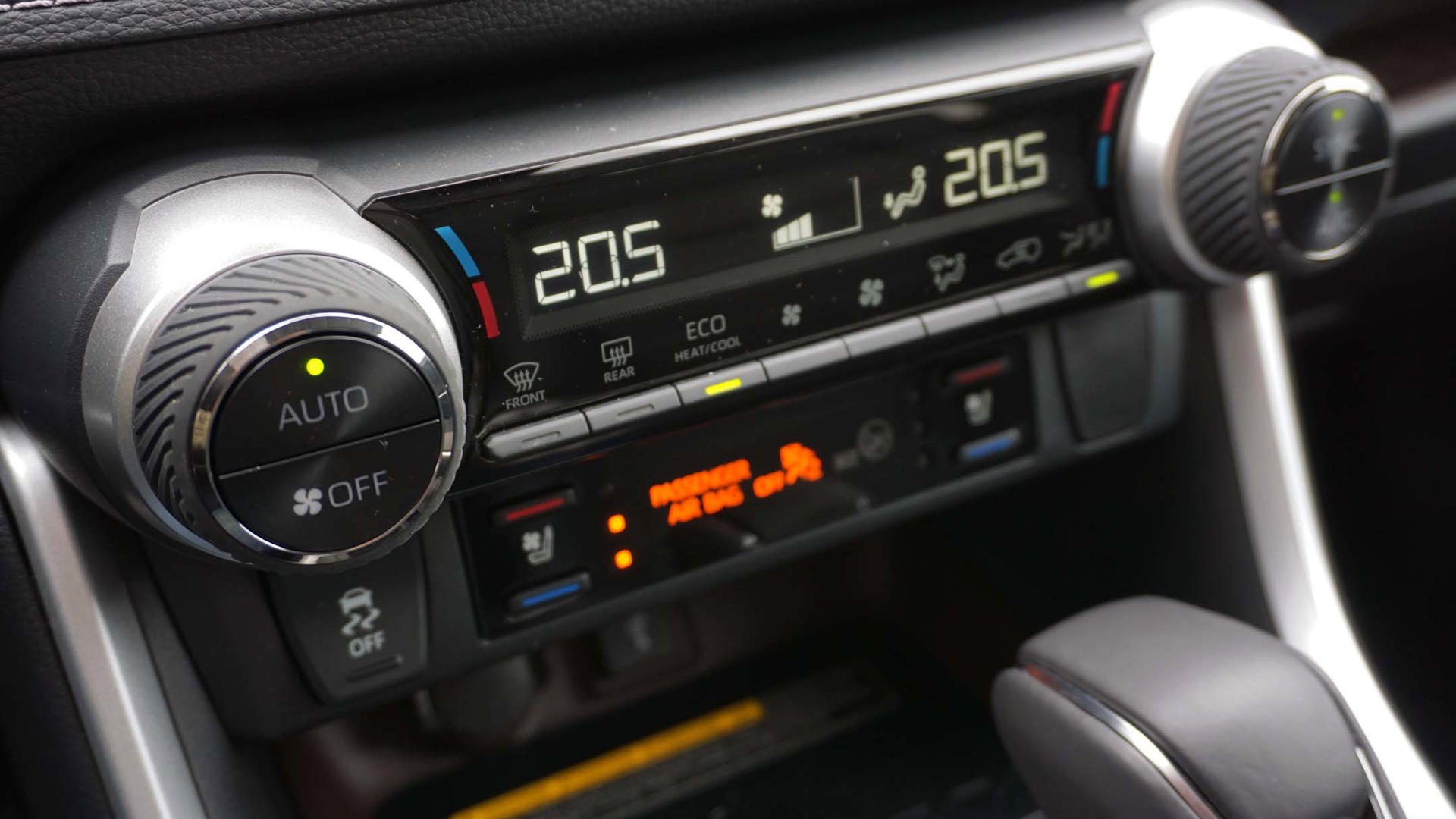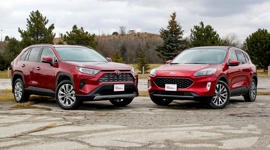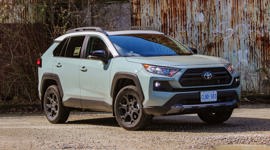 AutoTrader SCORE
AutoTrader SCORE
-
STYLING9/10
-
Safety10/10
-
PRACTICALITY9/10
-
USER-FRIENDLINESS7/10
-
FEATURES8/10
-
POWER8/10
-
COMFORT8/10
-
DRIVING FEEL8/10
-
FUEL ECONOMY8/10
-
VALUE8/10
The Toyota RAV4 isn’t just a key vehicle in this country’s auto market, it may very well be the quintessential Canadian crossover.
Not only does Toyota build the RAV4 in Ontario, but it’s also been the best-selling SUV in the nation for the last four years, edging out the likes of the always-popular – and Ontario-built – Honda CR-V. But why is that? What is it about this compact crossover that makes it such a hit with Canadians?
Safety: 10/10
Besides its reputation for reliability, the RAV4 has long been synonymous with safety. That notoriety continues with the newest version introduced last year, earning top ratings from the Insurance Institute for Highway Safety (IIHS) for crashworthiness and crash prevention.
Standard fare includes blind-spot monitoring, automatic high-beams, lane-keep assist and departure warning, adaptive cruise control, and automatic forward emergency braking with pedestrian detection. It’s an impressive suite of safety features, and Toyota deserves much praise for including it in every RAV4 model.
Moving to the top-of-the-line Limited adds reverse automatic braking – the only advanced safety feature that’s not standard – as well as proximity sensors front and back, and a surround-view monitor that uses cameras mounted around on all sides of the vehicle to provide a bird’s-eye view when parking or negotiating tight laneways.
Features: 8/10
Considering its popularity – Canadians bought 65,248 RAV4s last year – very little about this newest version moves the bar in this incredibly crowded segment when it comes to features. Advanced safety equipment aside, it lacks the kind of in-demand content offered elsewhere, including the kid-friendly Wi-Fi hotspot that’s standard in the CR-V or the self-parking feature offered in competitors like the Ford Escape and Jeep Cherokee.
Otherwise, the RAV4 can be fitted with most comfort and convenience features buyers can expect in the segment. The base model doesn’t come with much; heated front seats, a seven-inch touchscreen infotainment system, Apple CarPlay and Android Auto (the latter of which is new for 2020), and a government-mandated rear-view camera make the list of what’s included. All-wheel drive is offered as a $2,100 upgrade on the base LE and XLE trims.
Features improve steadily from there, with the second trim and up coming with a heated steering wheel, power-adjustable driver’s seat, dual-zone automatic climate control, rain-sensing wipers, a sunroof, power tailgate, and alloy wheels. The Trail model, meanwhile, adds a wireless charging pad, a larger eight-inch touchscreen, satellite radio, ventilated front seats, and an available TRD-tuned suspension.
The loaded RAV4 Limited rounds out the list with everything from heated rear seats to a foot-activated tailgate, driver’s seat setting memory, an 11-speaker stereo, built-in navigation functionality, and a front-view camera.
Styling: 9/10
The RAV4’s styling varies depending on trim, but the basic look is a chiselled and rugged one. While others in the segment stick with a sleek, almost car-like aesthetic – think Ford Escape or Mazda CX-5 – Toyota’s compact crossover dials up the trucklette vibe with great success. While not quite as boxy as the Subaru Forester, it eschews rounded edges in favour of angular ones.
The RAV4 Trail takes the ruggedness a step further with the addition of high-profile roof rails and thicker wheel arch moldings, while the rest of the lineup – including the loaded Limited – settles for something slightly more understated. That’s almost a detriment to the top-of-the-line model, which appears almost too similar to some of the more-affordable versions. While it benefits from some extra brightwork and sizable 19-inch alloy wheels, there isn’t much to match its high price tag.
It’s much the same inside, with the Limited offered in subdued schemes that belie the cost. Particularly disappointing is that while grey and black are the only options, the cheaper Trail is offered with a brown and white cabin complete with orange accents. The saddle brown that’s standard in the priciest Forester would surely be welcome in the equivalent RAV4.
Comfort: 8/10
Considering it’s offered in every key competitor, the RAV4 could also benefit from the availability of leather upholstery. Instead, the seats come in the choice of cloth or synthetic simulated leather that leaves something to be desired. While the same fabric is fine in the more expensive Toyota 4Runner TRD Pro for its durability and ease of cleaning, it’s disappointing in the cabin of a $43,000 compact crossover.
The seats themselves are generally comfortable and supportive, even on longer drives, though their positioning could be problematic for some users. Taller drivers may find the height of the seat more than a tad too high, even when lowered to its limits. The rear seats are also raked somewhat awkwardly, with a slight recline that could be the source of motion sickness for those prone to it.
Those shortcomings are easily offset by what are otherwise spacious accommodations. Rear-seat legroom makes the RAV4 feel like a larger vehicle than it is, while occupants of either row will find more than enough hip and shoulder room to settle in and shift around when necessary.
The three-stage heated front seats fire up quickly, as does the heated steering wheel that’s only necessary for short bouts before becoming too hot to handle. While the rear seats only offer single-stage heat in the top trim, occupants will find adequate warmth in either outboard position. Passengers in the back also benefit from HVAC vents on the back of the centre console, keeping warm – or cool – air moving throughout the entire cabin.
Ride quality is impacted ever so slightly in models featuring plus-size alloy wheels, but not enough to disrupt the RAV4’s overall comfort on a variety of roads. Even severely rutted dirt roads lead to audible annoyances more than outright unpleasantness, with a generally smooth and well-composed demeanour around town and on the highway.
User Friendliness: 7/10
If there was a knock on the RAV4’s usability, it would be that some of the controls are tiny and the corresponding labels difficult to read at a glance. That’s particularly true of the buttons used for various HVAC functions like fan speed. While the temperature control knobs are large (and the buttons within them easy to read), the buttons between them – and the ones below for seat heat and ventilation – are distractingly small. The buttons next to the driver’s left knee are also awkwardly placed, leaving controls for functions like the heated steering wheel obscured from view while driving.
The infotainment system isn’t exactly a highlight either, with the eight-inch touchscreen slower to respond to inputs than ones from competitors like Subaru, Jeep, and Ford. Having smartphone functionality through the inclusion of both Android Auto and Apple CarPlay helps keep interaction with the background interface to a minimum. When required, the screen is flanked by shortcut buttons to access different features and menus – though much like the ones used for HVAC controls, the buttons and corresponding labels are rather tiny.
Contrasting those quibbles is outstanding outward visibility in most directions, with the tall seating positioning providing a good vantage point, particularly for drivers of average height or shorter. Those on the taller side may find the A-pillar obstructs the view somewhat, though it’s easy to look around when approaching crosswalks during right-hand turns.
Practicality: 9/10
The RAV4 doesn’t offer the most outright cargo room in the segment – the CR-V has the edge here – but there’s more than enough space for most jobs. Rear liftover isn’t quite as low as the wagon-like height of the Honda, but behind the hatch is a boxy space for stuff. Volume stands at 1,059 L with the rear seats in place and 1,977 L with them folded, providing ample room for all kinds of stuff.
Unfortunately, the rest of the cabin is short on storage space, with small door pockets and a cramped console bin available to fit stuff. The wireless charging pad’s location beneath the HVAC controls provides additional space for items like wallets and devices, keeping them out of the twin cupholders separating driver and passenger.
Power: 8/10
It’s been some time since the RAV4 was offered with a V6 engine, though there are a few choices when it comes to powertrain. There’s a hybrid version – of which Toyota sold 14,246 in Canada last year – and a plug-in hybrid on its way, though the lion’s share of sales still belongs to the conventional gas-powered model.
Output comes from a naturally aspirated 2.5L four-cylinder that makes 203 hp and 184 lb-ft of torque. That’s routed to the wheels via an eight-speed automatic transmission that’s prone to the occasional awkward and unpredictable shift, while the engine can feel somewhat strained at times. There is, however, more than enough passing power deeper in the accelerator pedal.
Driving Feel: 8/10
Every gas-powered RAV4 comes with a drive mode selector that has normal, eco, and sport settings that will adjust throttle response accordingly, but all-wheel-drive models add traction settings for terrain like mud, sand, and rocks. While it’s unlikely many RAV4 owners will be crawling over rocks and bashing through sand dunes, at least a few of those settings could come in handy – especially in the spring when the snow and ice starts to thaw.
When it’s time to open the cottage for the season or head out into the country for a family hike, conditions can be sloppy. The ability to tailor the drivetrain and traction control to the conditions simply adds a bit more peace of mind to the RAV4, making it a welcome-if-little-used addition.
Out on the open road, the RAV4 lacks the character of a competitor like the Mazda CX-5, though it’s perfectly adequate and easy to operate. Particularly around town, the Toyota is manageable to manoeuvre, benefiting from a relatively light – albeit disconnected – electric power steering system and that good outward visibility.
Fuel Economy: 8.5/10
With an all-wheel drive system that disconnects the rear axle until four-wheel traction is needed, fuel consumption ratings from Natural Resources Canada (NRCan) stand at 9.2 L/100 km in the city, 7.1 on the highway, and 8.2 combined. Front-wheel-drive versions fare only marginally better, according to NRCan, with city/highway/combined ratings of 8.8/6.8/7.9 L/100 km.
Real-world consumption proved marginally worse, with a week of testing ending at 8.9 L/100 km combined.
Value: 8/10
A base RAV4 comes with a price tag of $28,090 before freight and fees; $2,100 more to add all-wheel drive. The Subaru Forester comes similarly equipped – right down to the same safety features, minus blind-spot monitoring – for $28,690, as does the Honda CR-V for the same price.
Priced at $41,250 before freight and fees, the loaded RAV4 Limited comes well equipped, though the lack of leather upholstery could be a turn-off for some buyers. (Especially considering the quality leather that comes in competitors like the Subaru Forester and Mazda CX-5.)
The Verdict
Underwhelming though the RAV4 may be to drive, Canadians sure can’t seem to get enough of them. There’s a reason why Toyota has sold more than half a million of these in Canada over the years, and what the RAV4 lacks in personality it more than makes up for with a safe, reliable, and user-friendly ride.
| Engine Displacement | 2.5L |
|---|---|
| Engine Cylinders | I4 |
| Peak Horsepower | 203 hp @ 6,600 rpm |
| Peak Torque | 184 lb-ft @ 5,000 rpm |
| Fuel Economy | 9.2/7.1/8.2 L/100 km cty/hwy/cmb |
| Cargo Space | 1,059 / 1,977 L seats down |
| Model Tested | 2020 Toyota RAV4 Limited |
| Base Price | $41,250 |
| A/C Tax | $100 |
| Destination Fee | $1,815 |
| Price as Tested | $43,420 |
|
Optional Equipment
$255 – Ruby Flare Pearl Paint, $255
|
|
